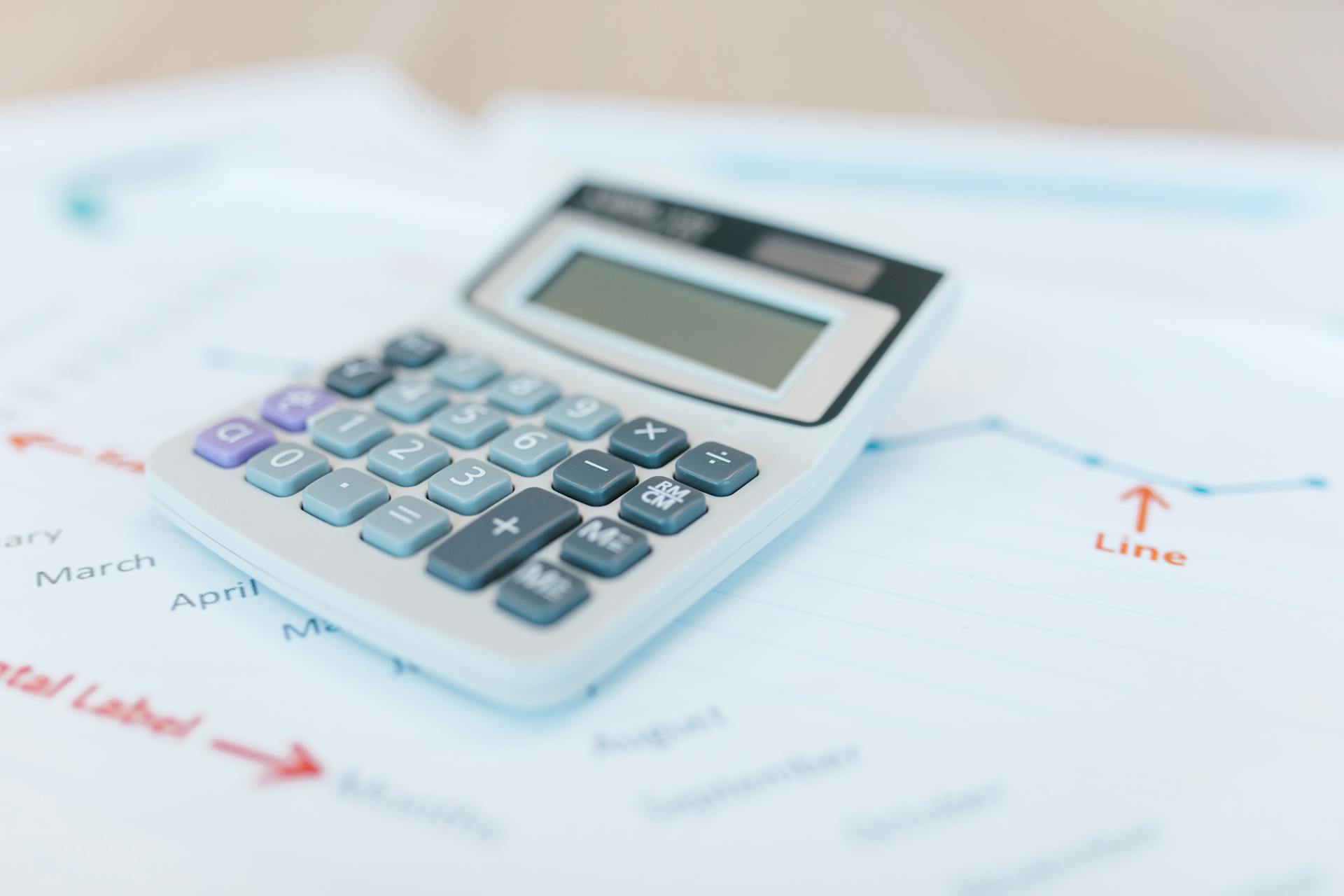
Improving the capital adequacy ratio is crucial for financial stability. A well-maintained capital adequacy ratio ensures that financial institutions have sufficient capital to absorb potential losses.
Incorporating more capital into your institution can be achieved by increasing retained earnings, reducing risk-weighted assets, or issuing new shares. Reducing risk-weighted assets can be done by divesting non-core businesses or reducing lending to high-risk borrowers.
Maintaining a strong capital adequacy ratio also allows for better risk management and reduced reliance on short-term funding. This can be achieved by maintaining a stable and diversified funding base, such as through deposits or long-term debt.
By implementing these strategies, you can improve your capital adequacy ratio and maintain financial stability, ultimately protecting the interests of your depositors and stakeholders.
What Is Capital Adequacy Ratio?
The capital adequacy ratio is a measure of a bank's financial strength and ability to absorb potential losses.
It's calculated by comparing a bank's capital to its risk-weighted assets, with higher ratios indicating a bank has a stronger financial position.
In simple terms, a higher capital adequacy ratio means a bank is better equipped to handle unexpected losses and maintain stability.
This is crucial for banks to stay in business and keep customer deposits safe.
What Is Capital Adequacy Ratio in Simple Terms?

The Capital Adequacy Ratio (CAR) is a measure of a bank's financial strength and ability to absorb potential losses. It's a crucial indicator of a bank's stability and trustworthiness.
A bank's CAR is calculated by comparing its capital to its risk-weighted assets. This means that the bank's assets are weighted according to their level of risk, with higher-risk assets carrying more weight.
Higher CAR ratios indicate a bank has a stronger financial position. This is because it means the bank has more capital to absorb potential losses.
Explore further: Statutory Liquidity Ratio Means
Basel History
The Basel Accord has a rich history, with three major updates: I, II, and III.
The first Basel Accord, Basel I, was published in 1988 and established the original regulatory ratio of 8.0%.
This regulatory ratio is analogous to an equity/asset ratio of at least 8.0%, but instead of book assets, the assets are adjusted for risk.
The BIS committee constantly updates the regulations, sometimes slowly.
Worth a look: Third Basel Accord
By the time Basel II was introduced in 2004, the regulatory ratio had expanded to include market risk and operational risk.
Basel II greatly increased the sensitivity of risk measurement, but the global financial crisis proved it to be incomplete.
Basel III is the current rule set, adding two liquidity ratios and a leverage ratio to the regulatory capital adequacy.
Basel III also retains the Basel II ratio, where the ratio of 8.0% in Basel II maps to the Total Capital (Tier 1 + Tier 2) ratio in Basel III.
Broaden your view: Basel 4 Impact on Banks
Why It Matters
The Capital Adequacy Ratio (CAR) is a vital metric that helps ensure the stability of a bank's financial position. A high CAR indicates a bank has a robust financial position and is better equipped to weather economic downturns or unforeseen financial shocks.
Having a sufficient CAR is crucial for banks as it allows them to absorb certain losses without going bankrupt and putting depositors' money at risk. A bank with a high CAR is considered secure and in good financial health, able to meet its financial commitments.

In the event of a bank winding up, depositors' funds are given more importance than the bank's capital. This means depositors will only lose their savings if the bank incurs a loss greater than its capital.
A high CAR minimizes the likelihood of banks becoming bankrupt, which helps maintain the stability of a country's financial system. By maintaining a high CAR, banks can safeguard depositors' funds and ensure their financial stability.
Here are the benefits of a high CAR:
- Financial Stability: A high CAR indicates a bank has a robust financial position.
- Risk Mitigation: The CAR is designed to ensure that banks have enough capital to absorb potential losses.
By understanding the importance of the CAR, you can take steps to improve your bank's financial stability and safeguard your depositors' funds.
Factors Affecting Capital Adequacy Ratio
A low Capital Adequacy Ratio (CAR) can be a major concern for anyone with financial interests in a bank. Several factors can contribute to a low CAR, making it essential to understand what they are.
High levels of non-performing loans can erode a bank's capital base and lower its CAR. This can happen when borrowers struggle to repay their loans, leaving the bank with a significant amount of bad debt.
Intriguing read: Low Ltv Ratio

Inadequate capital reserves can also leave a bank vulnerable to losses, dragging down its CAR. This is particularly concerning for Tier 1 capital, which is a crucial component of a bank's capital base.
Economic downturns can lead to a surge in loan defaults, directly affecting a bank's CAR. Rising unemployment, falling GDP growth, and high inflation can all contribute to this negative trend.
Poor risk management practices within a bank can result in higher credit risk, which can lower the CAR. This highlights the importance of effective risk management in maintaining a healthy CAR.
Regulatory actions can also negatively impact a bank's CAR. This can happen when regulatory authorities impose restrictions or penalties on a bank due to compliance issues or concerns about its financial stability.
Here are the key factors affecting Capital Adequacy Ratio:
- High levels of non-performing loans
- Inadequate capital reserves
- Economic downturns
- Poor risk management
- Regulatory actions
Understanding Capital Adequacy Ratio
The Capital Adequacy Ratio (CAR) is a critical financial metric that measures a bank's financial health and stability. It represents the proportion of a bank's capital to its risk-weighted assets.

A higher CAR indicates greater financial resilience, while a lower CAR suggests a higher level of risk. The CAR is typically expressed as a percentage and is regulated by financial authorities in most countries.
Tier 1 capital, which includes common stock, is the most reliable form of capital and can absorb losses without causing the bank to collapse. Tier 2 capital, which includes undisclosed reserves and hybrid instruments, is less reliable but can also absorb losses to a lesser extent.
The percent threshold for a bank's CAR is set by the national banking regulator, although many follow the requirements set by the Basel Committee, which is the primary global standard setter for banking regulations. This currently stands at 9% under Basel III.
Here are the four key capital adequacy ratios calculated under Basel III:
- The leverage ratio = CET1/assets = 90/2,810 = 3.20% which exceeds the required 3.0% leverage
- The common Equity (CET) ratio = CET1/RWA = 90/2,000 = 4.50% which exactly meets the required 4.5% but fails to allocate an additional 2.5% to the capital conservation buffer (CCB)
- The Tier 1 ratio = Tier 1/RWA = 130/2,000 = 6.50% which exceeds the required 6.0% for Tier 1 capital
- The Total (Tier 1 + Tier 2) ratio = (Tier 1 + Tier 2)/RWA = 240/2,000 = 12.0% which easily exceeds the 8.0% required for total capital
Impact of Capital Adequacy Ratio
A high Capital Adequacy Ratio (CAR) has a significant impact on banks and their customers.

Banks with high CARs are better positioned to weather economic storms, having a substantial financial cushion that allows them to absorb losses without resorting to extreme measures.
Lower interest rates on loans benefit borrowers, stimulating economic growth and encouraging investment.
A high CAR can be a competitive advantage for a bank, as customers tend to trust and prefer financially sound institutions, leading to more deposits and business opportunities.
Banks with excess capital may invest in more secure assets, such as government bonds or high-quality corporate bonds, offering a reliable source of income and potentially higher returns for the bank’s customers.
A high CAR is a buffer against unexpected financial shocks, allowing banks to absorb losses without drastic measures that could negatively impact the value of customer assets.
By having a high CAR, banks can offer lower interest rates, making it easier for customers to borrow money and invest in their businesses or personal projects.
Consider reading: Capitalize Interest
Frequently Asked Questions
What is the capital adequacy ratio solution?
The capital adequacy ratio (CAR) is calculated by dividing a bank's total capital by its risk-weighted assets, indicating its financial health. A higher ratio suggests better financial stability.
Sources
- https://capital.com/capital-adequacy-ratio-definition
- https://eqibank.com/blog/demystifying-capital-adequacy-ratio-and-its-impact-on-your-assets/
- https://chartexpo.com/blog/what-is-capital-adequacy-ratio
- https://www.bionicturtle.com/capital-adequacy
- https://eqibank.com/blog/banks-capital-adequacy-ratio-and-its-impact-on-customer-assets/
Featured Images: pexels.com

